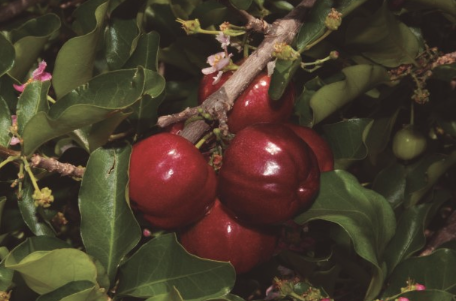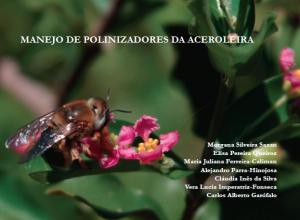
Management of Pollinators na Aceroleira
“The Barbados cherry is grown in several countries of America and, currently, Brazil is the largest producer, consumer and exporter in the world. The northeast region is the largest producer in the country and the state of São Paulo is the second largest. The production is primarily intended for pulp processing industry and fresh consumption. Like this, the fruits are classified in two ways: Tabletop (sweet fruits) intended for fresh consumption and for industry (fruit acids, with higher content of vitamin C) Recommended for processing juices.”
“The Barbados cherry can bear fruit throughout the year, depending on temperature and regional rainfall. It is a self-incompatible species, so, It is not fertilized by pollen from the same flower and / or the same plant, cross-pollination is required, which makes it dependent on pollinators. The main and more efficient pollinators are solitary bees tribe Centridini. The attraction of pollinators and maintenance in these crops is an excellent strategy for increasing productivity.”
++++++++++
These two texts book extracts “Management of Pollinators of acerola” They portray the importance of pollination activity for growing this important crop. The book presents important data on the biology of solitary bees, main insect pollinators of acerola, especially as related to their nesting habits and larval development, natural enemies and relationship with plants. Furthermore it shows a specific study on the use of “trap nests” as a strategic alternative to the maintenance and retention of pollinators in agricultural fields.
ultimately, a highly recommended read for farmers of acerola, and all stakeholders (and passionate) the exuberant world of our bees.
Special thanks to Morgan Silveira Sazan author for sharing this exquisite work.
Access content: Management of Pollinators of acerola


Sorry, the comment form is closed at this time.